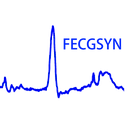Open Science

The AIMLab. has a culture and longstanding record for opening source codes. These resources have already been visited by thousands of researchers and been cited by dozens.
Individual software and toolboxes
PhysioZoo is a collaborative platform dedicated to the study of continuous physiological time series analysis from Human and other mammals.
Photoplethysmography (PPG) is an optical sensing technique widely used to monitor health and fitness in clinical and consumer devices, such as smartwatches and pulse oximeters. PPG signals contain a wealth of information about the function of the heart, blood vessels, breathing, and the autonomic nervous system. A total of 74 PPG digital biomarkers were implemented in the pyPPG toolbox.
Pulse oximetry is routinely used to non-invasively monitor oxygen saturation levels (SpO2). A low oxygen level in the blood means low oxygen in the tissues, which can ultimately lead to organ failure. A total of 44 digital oximetry biomarkers (OBM) were implemented in the pobm toolbox.
The electrocardiogram (ECG) is a widely-used tool used in medical practice to identify cardiac disease. We implemented clinically important digital ECG biomarkers in the PECG toolbox to create a reference toolbox for ECG morphological analysis.
Heart rate variability, the variation of the time interval between heartbeats contains important information about cardiac health and the autonomic nervous system. HRV can be used to quantify the short- and long-term dynamics of heartbeats. A total of 26 HRV biomarkers were implemented as part of mhrv toolbox.
Atrial Fibrillation (AF) is the most common arrhythmia, linked to a significantly higher risk of stroke and increased mortality. ArNet2 is a deep-learning algorithm designed to detect AF from RR interval derived from the ECG. Trained on 51,386 hours of data from 2,147 patients and validated across four countries, ArNet2 has demonstrated strong generalizability across diverse clinical datasets.
Digital fundus images are specialized photographs of the interior surface of the eye, capturing detailed views of the retina. The fundus image allows for the visualization of numerous vascular features, notably the arterioles (small arteries) and venules (small veins). PVBM enable the engineering of arterioles and venules digital biomarkers.
The FECGSYN toolbox is a reference open-source platform for non-invasive foetal electrocardiography (NI-FECG) research.








